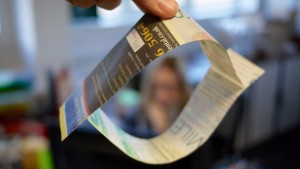Today I learned about the four forces of rocket technology. The four forces are:
- thrust
- drag
- lift
- weight/gravity

Thrust: the rocket fuel burning to boost the rocket upwards.
Drag: The air pushing down on the rocket, trying to slow it down.
Lift: Bernoulli’s principle working to create lift, boosting the rocket upwards.
Weight: the gravity pulling the rocket back down to earth.
Bernoulli’s principle is the rule that is explained through F.L.P. S.H.P.
F.L.P. S.H.P. is short for flip the ship which is an abbreviation to the general idea of Bernoulli’s principle. F.L.P. is short for Faster the velocity, the Lower the Pressure. S.H.P. is the opposite which is Slower the velocity, the Higher the Pressure.

Bernoulli’s principle helps a plane fly because having a lower pressure underneath the wing, combined with the higher velocity of the air currents going over create lift. This is how a plane flies.
in class we made tumble gliders which use these rules to stay airborne using only a piece of cardboard to steer.

Over the past little bit Mr. Robinson’s class has been studying chapter 1.2 for science, Investigating Matter. To show my learning, I’ve put together a brief summary of what the chapter is about. Everything is made of matter, which is anything that has mass and volume. Sometimes objects go through chemical changes which is when substances combine to form a different substances, like when sugar is cooked to create caramel. Another form of change an object can go through is a physical change, where instead of the substance changing entirely, only the outward appearance is changed. For example, when a ice cube melts, it turns into a puddle while still remaining water. The kinetic molecular theory explains what happens to matter when it goes through particle changes. No matter how compressed particles are, they aren’t actually fully touching each other because there is empty space between them. There are three types of matter; solid, liquid, and gas. When a solid is changing in to a liquid, it’s called melting, while changing a liquid to a solid is called solidification. A solid to a gas is called sublimation and a gas to a solid is called deposition. The changing of gas to liquid is called condensation, while liquid to gas is called evaporation. Sometimes, a substance is made of only one type of matter, it is called a pure substance. There are only two types of pure substances, an element, and a compound. A element is a substance that cannot be broken down or separated into smaller substances. A compound is a pure substance composed of at least two elements, like water which is made of hydrogen and oxygen. during this chapter, we took part in a lab called bag of change. Within the lab we placed three unknown chemicals in a ziploc bag and observed the changes that took place. Our three substances were calcium chloride, sodium hydrogen carbonate, and bromothymol blue. From this lab I learned how substances go through chemical changes, and how the bromothymol blue is an indicator that tells you if something is acidic or not. Chapter 1.2 had a lot of interesting information and I learned a lot about chemistry and the way matter and particles work. i enjoyed doing this unit 🙂


